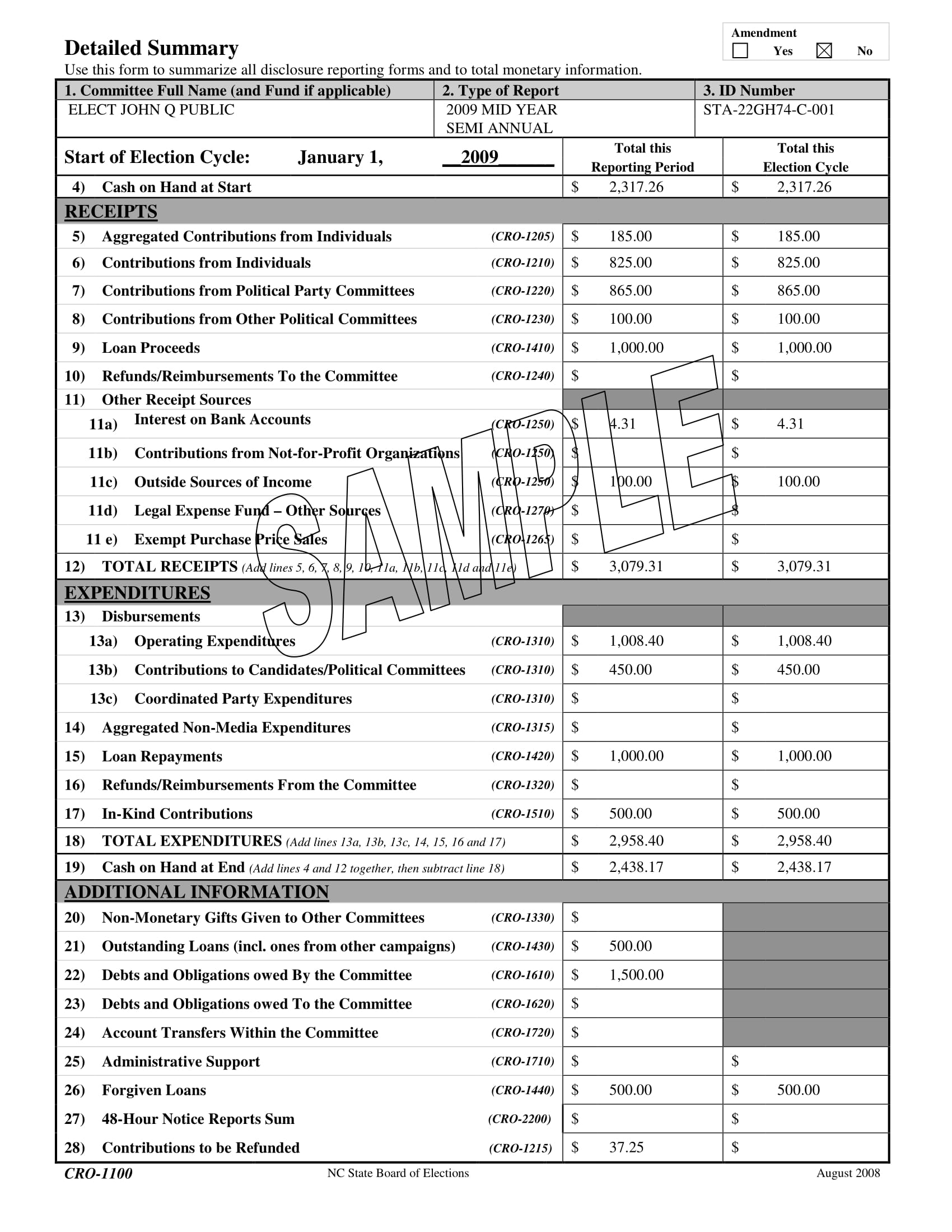Now that the first campaign finance reports of the year have been submitted to the North Carolina State Board of Elections (SBE), how does one find political action committee (PAC) and candidate reports for local and state elections?
There is a simple process for finding where the campaign committees you are following are sitting financially after the year’s first half. First go to the State Board of Elections web site and click on the “Campaign Finance” tab. Then click on the button “Search Campaign Funding and Spending Reports and Penalties.” From here, you are presented with three search options:
- The most effective way to find what a candidate committee is spending is to click the first option, “Search by Committee/Entity.” This will take you to the search engine, where you look up committees by name. They do not always have the exact same name as listed on their web sites. For instance, they could use “Friends of John Doe” or “Campaign to elect Jane Doe.” In other cases, the naming scheme can be more complex due to abbreviations such as “01st cong Dist Dec (Democrat)/ Rec (Republican)”. A simple guide located below the search bar can help you figure out under what name the committees might be registered.
- Searching by document type will allow you to find all kinds of notices or reports that have gone to and from the State Board of Elections. This is an easy way to see what committees may have filed or closed or view their most recent report. If you are unsure of a committee’s name in the SBE’s System, you can scroll through the menu and select “Report–Mid Year Semi-Annual” and search through all reports sent in for this most recent deadline.
- The third option, “Transaction Search By Entry,” allows you to search for specific expenditures or receipts.
How to read a campaign summary report
What each part of the campaign summary report means sometimes is self-explanatory, but sometimes it is not as obvious. You can find a brief explanation of the less-than-obvious ones in the following example of a campaign summary page:

Receipts
- Aggregated Contributions from Individuals: This part refers to donations from individuals that fall under the $50 reporting threshold. Information for these individuals is not public unless they move and donate again during that election cycle and exceed the threshold.
- Contributions from Individuals: This part is for everyone who has donated to the campaign and who has exceeded the $50 threshold, meaning their information is required to be reported. Information on these donors can be found in the data section of each report just below the summary. This money is counted separately from aggregated contributions for the purpose of total receipts.
- Contributions from Other Political Committees: This part is for contributions from entities such as PACs, candidate committees, or referendum committees.
- Other Receipt Sources: Parts 11a–c include any funds from organizations outside the political or individual sources and are broken up into subcategories.
- Part 11d is for a particular donation that is very limited in North Carolina. Corporations, business entities, labor unions, professional associations, and insurance companies cannot donate to any kind of committee’s legal expense fund. Only individuals and political committees may do so.
- Part 11e is for exempt purchase price sales, which are rare to see in a report and are only for political party executive committees and affiliated committees. It does not extend to subordinate or auxiliary committees (men’s or women’s political party organizations, Young Democrats or Young Republicans, etc.). It allows parties to raise contributions by selling products such as T-shirts, buttons, or food for fair-market prices. These kinds of sales do not require donor information but cannot exceed $20,000 per election cycle.
Expenditures
- Operating Expenditures: This part is for any expenses the committee incurred due to conducting business, including salaries, office supplies, and equipment costs. A description of all these expenses should be found below in the data section of the reports online.
- Coordinated Party Expenditures: This part is for costs that national or state party committees may make on behalf of general election campaigns of federal candidates. These are subject to very specific funds but do not count toward their standard contribution limits. Instead, their limits are determined by specific criteria from the Federal Election Commission. Limits for U.S. House candidates in North Carolina are set at $52,500; for U.S. Senate candidates, $870,800.
- Aggregated Non-Media Expenditures: This part is for simple expenditures not exceeding $50 and must be non-media purchases.
- In-Kind Contributions: This part is for nonmonetary contributions to a campaign that count both as an expense and a receipt for reporting purposes.
- An example of this can be donating a physical good including food, water or office supplies. Other examples include allowing use of a meeting space or designing a website for the committee. These donations do count toward any campaign contribution limits and must be assigned a reasonable market value for the good or service.
The next reporting session for campaigns and other political committees will not be until next year on January 28. Till then, we only have changes via amendments to reports to watch for as we continue into this upcoming election cycle.


